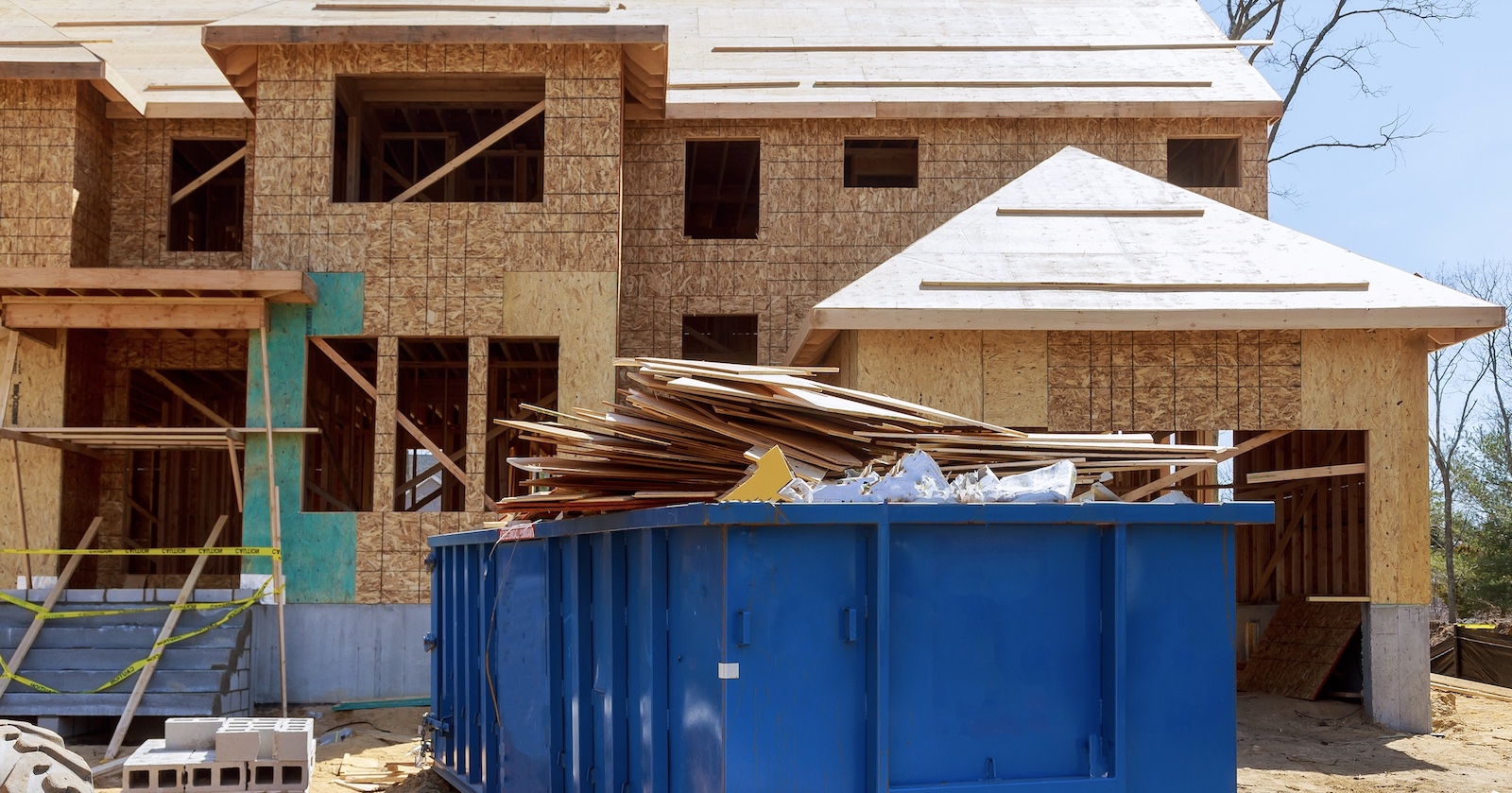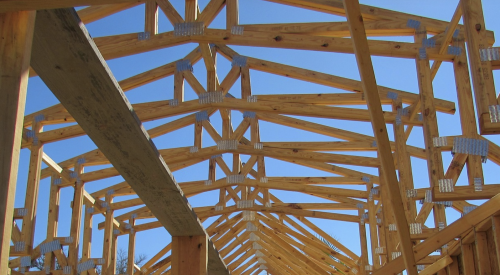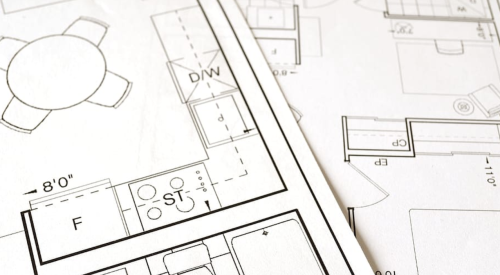One pleasant January day in Texas in 2007, we were working with a large division of one of America’s most respected private builders (let’s call it “Ace Homes”). It was the first year of our Lean process implementations with the builder and the big crash was just being felt in some markets ... although most builders were still in denial. With that, some of the industry’s most influential prognosticators were predicting a “slight correction” of no more than a 10% to 15% drop in sales, while the country’s top mortgage firm was still offering low-rate loans at zero down, a credit score of 560, and with no documentation of income. The “slight correction” was on the precipice of a free-fall.
Those of you who are under 35 or so may think I’m making this up. Unfortunately, for many builders, suppliers, and trade contractors, not to mention homeowners, the crash was all too real, and widespread. Even though this particular Texas builder was still doing well on the surface, it was one of the few smart enough to see what was coming. The only choice was to bring down costs, but because the builder served move-up buyers, simply eliminating features and cheapening its product wasn’t an option.
The builder team, working with its suppliers and trades, in highly structured meetings that took place over the course of a week, documented more than 150 savings opportunities. For me, even after 220-plus Lean implementations since 1997, one of those improvement ideas stands out as particularly memorable.
Construction Savings Opportunities: The Big One
The plumber had worked through his first few ideas, then took a deep breath and said, “OK, you won’t want to do it, but this one is big.” That got our attention.
He went on to describe how his large outfit worked with more than 30 builders annually, including several of the giants. And Ace Homes was the only builder among them that specified a double layer of moisture-resistant backer board behind each tiled shower and tub surround. The plumber said it was good stuff, a step up from the old green board, but he also explained that no one else in the entire market was using two layers. “Look,” he said, “if you get a leak, it doesn’t matter who caused it, the plumber gets the first call. We have no fewer calls for leaks with you than with any other builder. If I thought for one second that a double layer was helpful, I’d be the first to insist on it. As it is, you’re just burying money behind the walls for absolutely no benefit.”
One veteran field guy from the builder team just sat back, laughed, and shook his head. He described how 12 or 14 years ago, they’d had a rash of leaks and made a litany of changes to remedy the problem, only one of which was doubling the backer board. Yes, the leaks had stopped, but he’d also wondered from time to time about the true source of the leaks and whether the tile backer board had solved the problem. Over the years, a double layer had become standard for the builder, believing it was higher quality, so no one questioned it.
Another reaction came from the sales manager. She described how two layers of backer was thicker than standard width, so they were always special ordering—and spending more on—wider bullnose to cap off the tile. It was both expensive and a common source of delays.
These homes always had at least two tubs and/or showers, sometimes three, and the excess labor and material cost for those installs averaged a conservative $150 per home—14 years ago.
RELATED
- Trades Speak Out on Lean Process
- An Antidote to the Trade Shortage Epidemic
- 8 Steps to Make Construction Trades Profitable
Let’s stay conservative and call that $250 per home in 2021 dollars; $175 in material, $75 in labor. The builder was delivering 1,200 homes annually. Thus, this one simple change was worth $300K—$210K in material savings to the builder and $90K in labor savings to the installing trade-s in today’s dollars—and paid for the entire LeanWeek with us, several times over.
Later, the regional VP pointed out that over the past dozen or so years, the double layer of backer board totaled more than $3 million in cost for his division and provided zero benefit to the customer. Then he noted that many of the builder’s other divisions also used a double layer as an established best practice. Ponder that. We’re now talking in excess of $10 million!
The following Monday, Ace Homes made the change to a single layer of backer board and sent the change out to all of its divisions. Over the next year, the number of leaks was no greater than in previous years.
Not all of you build 1,200 units, of course. In a given year, we’ll work with those that build as few as 30 units and others that deliver as many as 3,000. But let’s say you do 100 units and have this same issue, which costs $250 per unit, or $25,000. That’s still $15K in material savings for the builder, and how would the trades feel if you saved them $10K in excess time spent on the job?
Construction Waste: History Repeats Itself
Recently, a framer for a builder that projects about 275 units this year found that the batt insulation delivered with a lumber drop on every house was never used. The builder team was incredulous. The purchasing director protested, “We stopped that two years ago!”
The builder believed it had implemented a process improvement where, instead of having the framer insulate with batts behind the tub and shower surrounds before the one-piece units were installed, it elected to have the insulator drill a hole and spray foam that area instead.
The new process was simpler and more reliable. But somewhere along the line, communication had broken down and the batts just kept showing up on the pick sheets at the lumberyard and were then loaded onto trucks and still found their way to the houses, at $70 per unit. So where did the batts go? No one knew. My guess: you might find them for sale at the local flea market each weekend.
The bottom line in material loss alone for this builder was $14,000 annually. That would pay for a nice company holiday party with all trades invited!
Over the years, similar examples have surfaced, with unused materials remaining on the standard delivery from lumberyard to jobsite, from boxes of nails, joist hangers, and, just last week for the umpteenth time, more giant-size tubes of caulk or adhesive than are needed.
Little Things Add Up
It always amazes our clients, and me, how small things add up to big savings. Consider this excess adhesive example: A few years back, I added a picture to my LeanWeek orientation presentation showing a $7 tube of construction adhesive left behind after framing. The framer for the builder explained there are one or two extra unused tubes left over on every job, and he leaves them behind because, well, they aren’t his. Like the batts, no one knows where they went, though certainly not to the next job site. The adhesive is delivered with the framing lumber drop—a standing order, no matter which model is being built.
Big deal? You’d be surprised. That’s seven bucks a tube, so let’s figure $10 for a tube and a half, on average. At 180 homes built the previous year, that’s about $1,800 in wasted/lost, perfectly fine glue. Perhaps it doesn’t sound like much, but what if you find 20 or 30 of these $10 to $100 items? The number gets pretty big pretty quick.
These examples demonstrate what's possible with structured, active, deep listening to your suppliers and trades.
We see this with each builder we take through Lean implementation, and the small items alone always run to six figures when you add them all up. In recent times, we have consistent, incredible waste in joist hangers, hold-down bolts, rebar, Romex wire, Cat 5 cable, thermostat wire, lengths of usable insulated duct, coils of nails, “chairs” for post-tension slabs, leftover trim pieces, excess tile, etc.
Now add your own items to the list. You’ve seen them lying around on the site or in the dumpsters. If you doubt me, climb up on four or five of your jobsite dumpsters this week and take a good look. Do the math. You’re looking at $10K, maybe $20K, maybe a whole lot more. Is that worth taking the trouble to find?
Electrical Example: Need Not, Waste Not
I recall one example where every electrician in town drove two, 8-foot grounding rods, one in front, one in back, connected to the electrical service panel with #4 copper wire. The code is somewhat freely interpreted by various locales, but typically, only one ground rod is required if there is less than 25-ohm resistance, and, if needed, a second ground can be affixed to the inbound (metal) water supply. Most older homes only have one ground—to the water supply pipe—and unless the panel is changed, the homeowner can usually just leave it that way.
At any rate, if your friendly local inspector makes you run two ground rods, they only have to be 6 feet apart and on the same side of the house (read: wherever is closest to the panel is the preferred location). Between the wire, rod, clamps, and labor, the result averages right around $125 per unit.
No code actually required this configuration, but that’s what everyone did. It had been noticed, but builders assumed inspectors would never change their requirements, code be damned. But one builder decided to fight it, called in some professional help, met with the inspectors, and got it changed. The inspectors finally agreed that one ground rod, plus the water pipe ground, would suffice in all cases. The builder delivered more than 400 homes annually, this “little” change saved the company $50K a year in wasted time and materials.
Concrete Example: A Jenny Craig Diet for Concrete
Another memorable example came from a local engineer who mentioned, quite casually, to the builder team, “You know, everyone in this town pours their footers 18 inches wide, but they really only need to be 12 inches by code.”
Whaaaaat?! The purchasing manager’s quick calculation revealed that’s an average of 3.25 yards excess concrete, plus extra gravel and labor; call it $350 per unit. That year, the builder would hit 400 units, meaning this one change would save $130,000! Everyone looked around the room at one another in disbelief. “Are you sure?” the VP of construction challenged, and the engineer said he’d email the VP the code spec as soon as he returned to his office.
RELATED
Later that day, the builder team ran this by the excavator who said yeah, he had heard such a thing, but the problem was, no one made a 12-inch bucket for the big excavators he was using, so they just used their 18 incher. The construction VP nearly had a stroke—before asking the excavator if he knew of a good welding shop. Well yes, the excavator did know a good one and enthusiastically recommended them to us all. And how much would it cost to take a torch, cut 3 inches off each side of the bucket, then re-weld the sides to create a 12-inch bucket? The excavator reckoned that might cost $200. Upon hearing that, the VP jumped up and pulled $80 from his money clip, then went around the room to the team getting contributions until he reached $200. He walked up to the excavator and proclaimed, “Take this $200 to your welder and put that bucket on a Jenny Craig diet!”
A Simple, Ingenious Solution for Construction Waste
And, while we’re on foundation footers, here’s a brilliantly simple one from our Canadian friends. The boss was getting on the crew about concrete “boil-out” from under the form boards of the footers they were pouring for a basement, which was costing 1 to 2 yards of concrete per home. Pure waste.
They hadn’t had much luck getting the excavator to dig the trenches more precisely, but then the crew leader had one of those a-ha! moments. He went to his personal truck and pulled out the extra roll of landscape cloth he had intended to return to the garden store (he’d bought it to block weeds in the flower beds he and his wife planted the previous weekend). Using a slap-tacker stapler, lined the insides of the form boards with long, U-shaped runs of landscape cloth. The result? No more boil-out, less harassing of the excavator, and an average savings of $150 per home.
The Lean Building Equation
I sent a request to our TrueNorth team, along with the some of the architects and engineers we bring in for the Lean plan workout version of our process, for examples of Lean examples and solutions. I got so many “greatest hits” that it begs another column, but just one quick example from Mike Latimer, one of the bright young architects from Todd Hallett’s TK Design shop and a member of Pro Builder’s Forty Under 40 class of 2020.
Mike recounted that once builders become aware of the cost of muntin bars on windows—$7 to $30 each—most decide to remove them from the windows on the sides and/or backs of homes. No one can really see the muntins there, and often the view out the back, such as when trying to watch the kids, is improved without them. Customers never object.
Muntins are usually left on the front of the home, for curb appeal, but there’s between $75 and $350 per unit to be saved by removing them everywhere else, because their value is just not appreciated. It’s just money laying around, waiting to be picked up.
With over 5,000 supplier and trade firms having submitted more than 30,000 improvement ideas during Lean process events, the examples included here are just a few that are particularly memorable to me and demonstrate what is possible with structured, active, deep listening to your suppliers and trades. Casual talk about the product simply does not work.
With over 5,000 supplier and trade firms having submitted more than 30,000 improvement ideas during Lean process events, the examples included here are just a few that are particularly memorable.
Remember, building Lean is never about dumbing down the houses and making them hard to sell. Lean is about adding value, an equation designated by V = B/C (value = benefit divided by cost). Every decision you make must include your calculation for both benefit and cost.
Our definition of Lean goes like this: “The continual search for, identification and eradication of waste in product, process, and plans.” To that we add, “If you can’t fully eliminate waste, then minimize it and find ways to increase efficiency.” As in the examples mentioned earlier, the builders couldn’t eliminate footers or electrical grounds, but they could find ways to build them more efficiently.
In addition to improving product and quality while reducing cycle time and cost, Lean process brings you ever closer to becoming the true “builder of choice.”
And now for one final admonition: You simply cannot travel very far down that road without the willing cooperation and participation of your suppliers and trades. Bringing them into the process of eliminating waste while improving product will save you a lot of money, and when you save them money as well, everyone wins.













